Julie Gammack first published this piece on her Substack, Julie Gammack’s Iowa Potluck.
No, it’s not just another new building. It is a liberation movement.
Usually, a dedication to a new building isn’t big news except for those with a personal stake in the construction. Ribbon-cutting ceremonies are pro forma events that give those involved a deserved acknowledgment. Funders show up to congratulate one another.
Last Saturday, August 20, was all of that, but oh, so, much more.
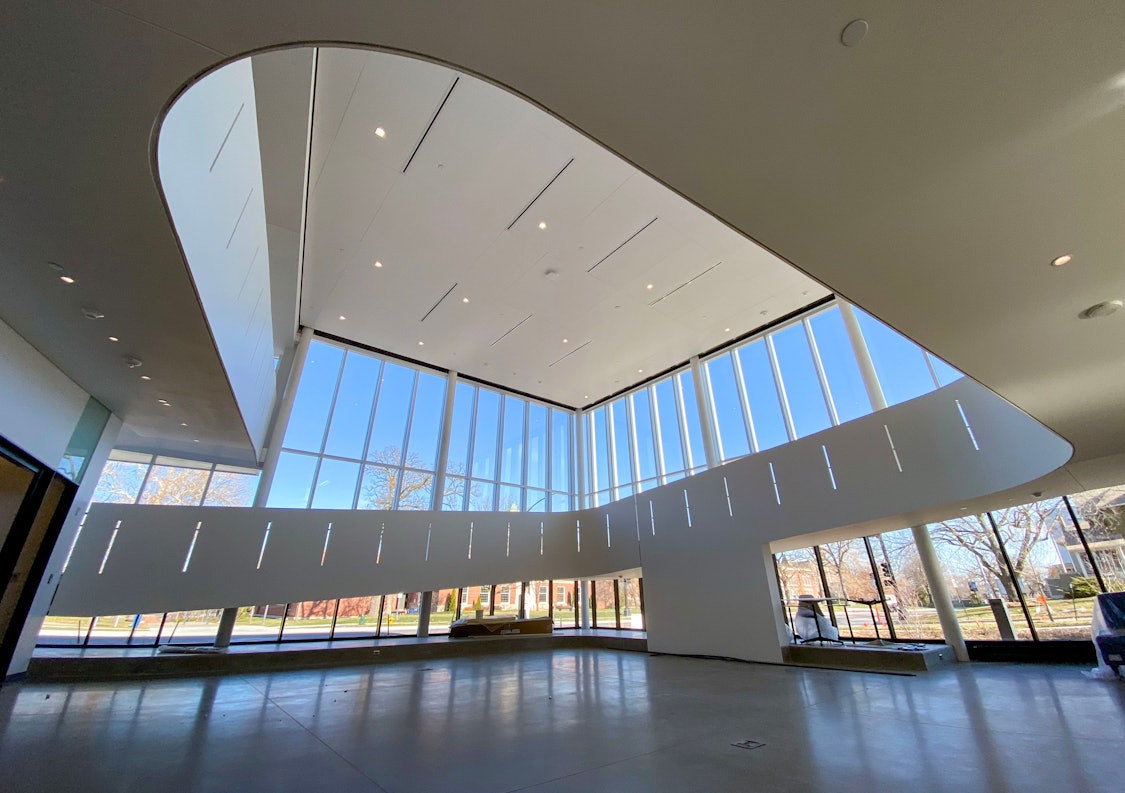
The Tom and Ruth Harkin Center, 2800 University Avenue, Des Moines. Courtesy of the Harkin Institute
The historic change brought by the construction of the Tom and Ruth Harkin Center and what it means to those with disabilities was evidenced when Kevin Nordmeyer, an architect with BNIM, wheeled up to the podium that was mechanically lowered to meet his needs as a speaker.
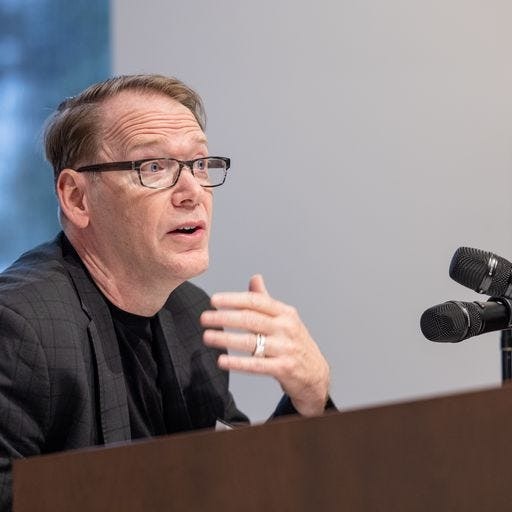
Kevin Nordmeyer, AIA LEED AP, BNIM Principal. Photo courtesy of the Harkin Center and Huey Photography
Little wonder he choked up when he began his remarks to tell the audience about this once-in-a-lifetime design process, which would make this building genuinely accessible, far beyond current accepted practice.
Tom Harkin represented Iowa for 40 years, first in the House of Representatives (1975-1985) and then in the U.S. Senate (1991-2015). Harkin’s signature accomplishment was the Americans With Disabilities Act or ADA. This landmark legislation was the first big step in a liberation movement for the community. Harkin said it is now just the baseline for what can come.
Visitors to the Harkin Center will understand what this means when they enter the building and see an encircling ramp. That part of the design creates common access to building levels, not just an elevator primarily used by some.
Says Nordmeyer:
The Tom and Ruth Harkin Center embodies a spirit of empathy and inclusion that embraces the broad spectrum of abilities and the human need to allow construction to go beyond the ADA. It includes principles of Generous Space, Clear Path, Equitable Experiences, and Individual Empowerment, as we defined with The Harkin Institute.
At this point, the newest addition to the Drake University campus in Des Moines has established a gold standard in new construction design, pushed to an extent by a Disability Policy Committee. As a result, electrical outlets are different colors, so the visually impaired can find them more easily. That’s just one of the dozens of ideas they inspired to create the final product.
And BNMI documented the process and put it into book form, which will help guide future architects worldwide to embrace inclusivity.
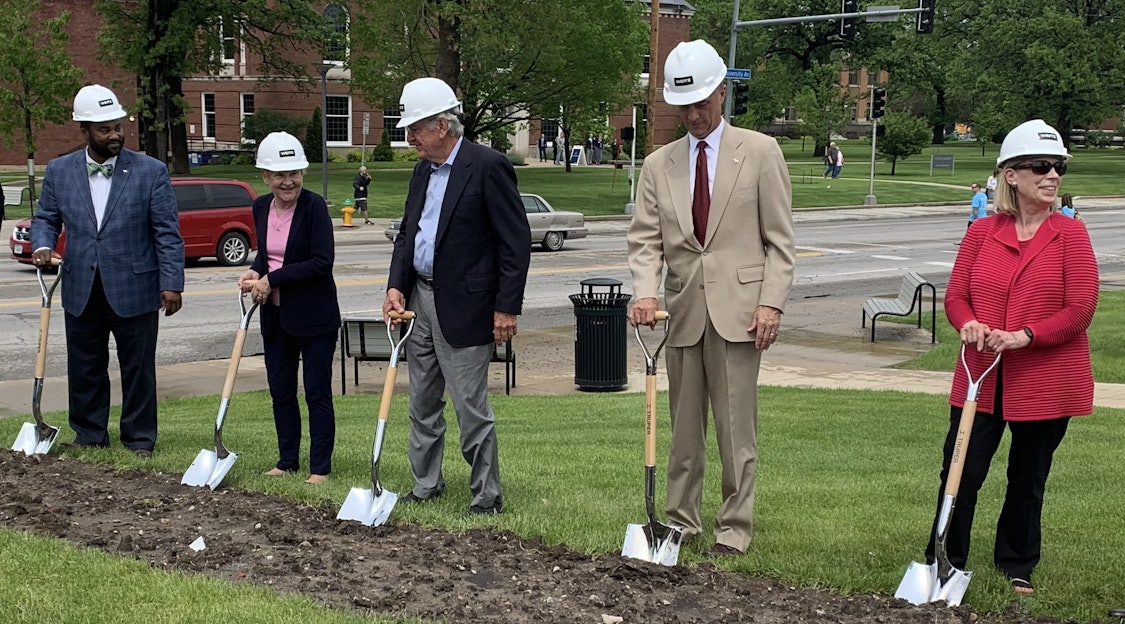
Left to right: Joseph Jones, outgoing director of the Harkin Institute; Ruth Harkin; Tom Harkin; Drake University President Marty Martin; and Marsha Ternus. Ground-breaking ceremony at 2800 University Avenue, Drake Campus. May 17, 2019. Photo by Julie Gammack
Marsha Ternus is a former Iowa Supreme Court chief justice and was the first director for the Harkin Institute when it launched in 2013. Harkin retired from the U.S. Senate in 2015, and his papers are stored in the Drake University Archives & Special Collections at Cowles Libray.
It was Ternus who was credited with the idea for a building on campus. “The immediate concern was that we had outgrown our store-front space,” she explained.
We needed more room for offices, meetings, and–if we were dreaming–events. On a more fundamental level, it was important for the Harkin Institute to be accessible. Tom cares passionately about accessibility, and the Institute’s space should exemplify that passion at work. We also wanted a facility that would allow us to tell Tom’s and the Institute’s story so those who visit the Institute would appreciate the importance of our mission and be inspired to take action themselves.
Drake’s President Martin added, “The new Harkin Center is a model of accessibility for our campus and beyond. This beautiful new space will welcome anyone and everyone, regardless of ability, for lectures, workshops, and other gatherings of many forms.”
Ruth Harkin was the primary driver of the Institute before Tom retired. She envisioned creating a way for students and community members to understand the significance of public policy in our daily lives.
The building dedication was a capstone to their 50-plus-year partnership. Said Ruth Harkin: “We were fortunate to have an architect who understood from day one how liberating a building as this could be for people with disabilities.”
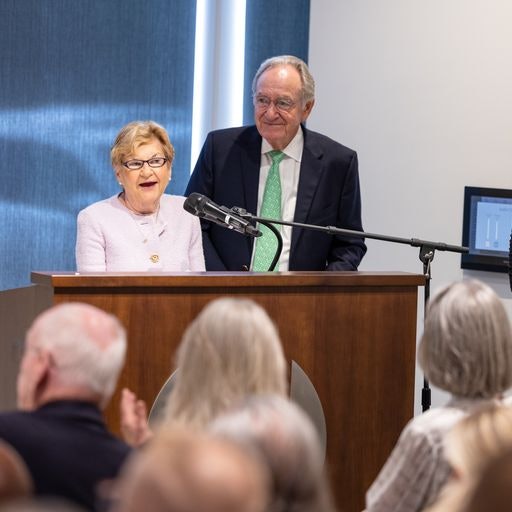
For more information about the Harkin Institute and Tom and Ruth Harkin Center, call 515-271-3623 or visit their website.
The photos below are courtesy of the Harkin Institute and Huey Photography.

Drake President Marty Martin and Marsha Ternus, who was the first director of the Harkin Institute


Center: Em Hillman, owner of Em’s Coffee in Independence, Iowa, with her family members and the Harkins.
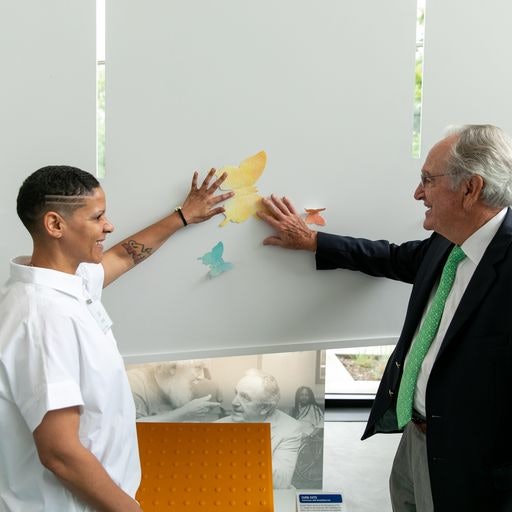
Jill Wells, Harkin Fellow, and Tom Harkin. The butterflies are an installation she created featuring the ADA legislation written in Braille

A toast to all involved, especially Tom and Ruth Harkin

The Tom and Ruth Harkin Center
Personal note:
I’ve been a fan of Tom and Ruth Harkin since my days as a rebel without a clue in 1973. I had to pay bills to support the causes I fought for, so I worked in a furniture store when Tom came in to offer me a job on his congressional campaign. At the age of 23, life changed.
I’ll say more about this during The Register’s Storyteller project on August 30 at Hoyt Sherman Place.
Richard and I are proud supporters of the Harkin Institute and the campus center bearing their name.
Upon his retirement, I thought Tom deserved a hard-earned passing of the torch. But that was not to be. He and Ruth have spent much of their time and talent securing the Harkin legacy. As Founding Harkin Institute board member Michael Gartner joked in his remarks on Saturday, they also contributed their grandchildren’s inheritance to build this physical symbol of inclusivity.

From left: Michael Gartner, Tom Harkin, Ruth Harkin
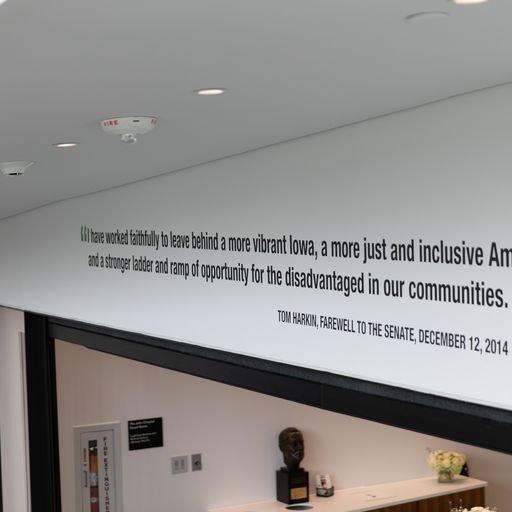
Julie Gammack is a former WHO Talk radio host and Des Moines Register columnist. She writes a column for Substack and produces the annual Okoboji Writers’ Retreat.

